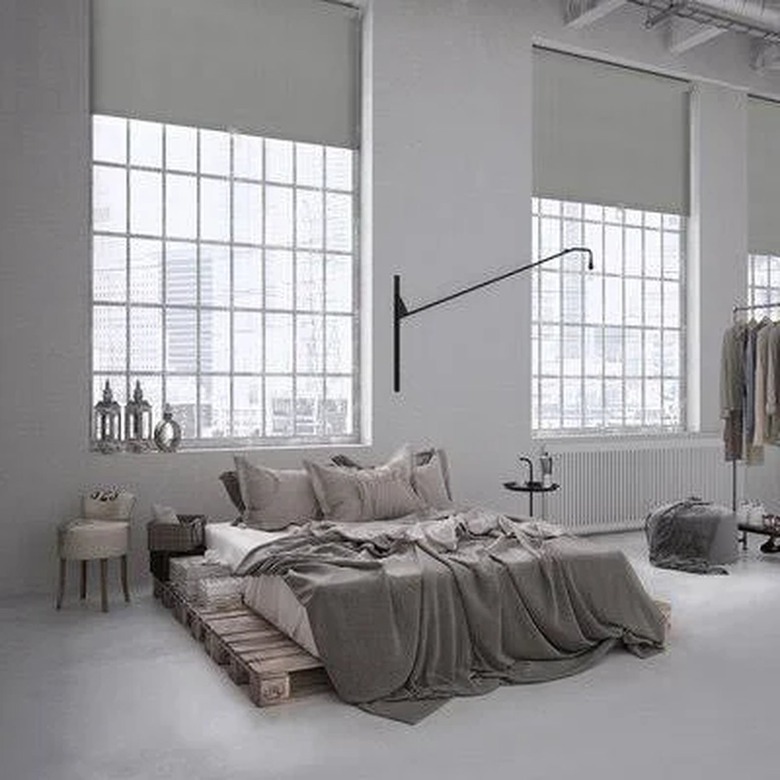Can You Paint Roller Blinds?
Roller blinds or shades don't have to stay their original, bland colors. You can dress them up with a fresh coat of paint or painted designs. Acrylic craft paint can be used on both fabric or vinyl blinds, but vinyl requires a coat of plastic primer first for best results.
Tip
There is no reason not to paint roller blinds if you want to dress them up and add color to your living room. Vinyl blinds need a coat of primer before the paint.
Preparing the Shade
Preparing the Shade
Pull the shade down to its full length, if it is hanging up, then set it down, fully extended, on a plastic drop cloth. Wipe the shade with a damp sponge to help remove any dust, then allow it to dry completely. If the shade is made from fabric, vacuum it with an upholstery brush attachment instead.
Apply a coat of spray primer designed for plastic for any shade or blinds made of vinyl, plastic or composite materials. Unlike painting a wall, priming is optional, but there's less likelihood of the paint peeling off quickly with a primer in place. Apply the spray primer outdoors or in a well-ventilated area.
Painting a Freehand Design
Painting a Freehand Design
Sketch your design lightly on the shade in either pencil or chalk — chalk wipes away with a rag. A fabric paint may be used on fabric-based blinds or shades, although a regular acrylic craft paint works just as well since the material will not be washed in a machine. Fill in the largest area of color or the background areas first — for instance, on a beach scene, paint either the sky, water and sand areas first, allowing each to dry before painting adjacent regions. Do not paint the areas designated for smaller objects such as boats or beach balls until the background is completely dry to the touch.
Paint the main subjects or objects featured in your painting, such as a beach umbrella or dolphins jumping out of the water. Paint each item in one color, waiting for the paint to dry before layering colors and adding details. Fill in the details and secondary colors for each item in your design using artist's brushes. Paint outlines or add shading where desired. Allow the shade to dry completely before closing it.
Creating Patterns With Tape or Stencils
Creating Patterns With Tape or Stencils
Create repeating patterns or detailed designs such as chevrons, stripes or a nighttime skyline using painter's tape or stencils. Apply strips of painter's tape to create your designs. Triangles or interlocking boxes work well for beginners. Use a large straightedge and a tape measure to ensure straight lines and accurate spacing. Apply paint between tape lines with a brush or roller.
For stencils, tape the stencils down securely with painter's tape. When using large stencils, a removable spray adhesive applied to the back of the stencil helps prevent paint from getting underneath the stencil form. Dab the paint on with a stencil-pouncing brush or use a sea sponge. Apply a second coat, if needed, over the first.
